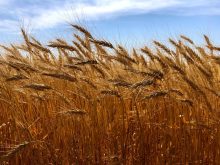The federal government’s latest commitment to restore and maintain rail service from the eastern Prairies up to Hudson Bay will involve $117 million over the next 10 years.
Ottawa’s pledge follows the Aug. 31 announcement of a deal for a private/public partnership group to buy the Hudson Bay Railway line, which has been closed since May last year due to damage from washouts and flooding.
The Arctic Gateway Group is taking over ownership of the line from U.S. shortline operator OmniTrax, which since 1997 had owned the port and grain terminal facilities at Churchill, Man. and Canadian National Railway’s (CN) rail line northeast from The Pas, Man. to Churchill.
Read Also

Federal budget shows remaining disconnect between agriculture, policymakers, panelists say
Canada’s agriculture sector is still disconnected from policymakers in some ways, say panelists at a CAPI webinar
Repairs to the rail line are underway, the government said Friday, with crews working “seven days a week, from sunrise to sunset, making best efforts to restore the rail service before winter 2018.”
The financial terms of Arctic Gateway’s deal with OmniTrax weren’t disclosed, but Friday’s announcement is the first to lay out the specifics of the federal contribution to the new ownership group’s business plan.
The total federal investment of $117 million will flow through Western Economic Diversification Canada.
Of that, $74 million will be provided over three years (2018-19 to 2020-21) to the Arctic Gateway Group for “acquisition and repair” of the Hudson Bay rail line and the port assets at Churchill.
The remaining $43 million will be paid out to Arctic Gateway over 10 years (2018-19 to 2027-28) for “operations and enhancing the commercial viability” of the rail line, port terminal assets and the Churchill Marine Tank Farm.
On top of that investment, the federal government has put up a further “repayable contribution” of $10 million, due 150 days from closing, as bridge financing until Arctic Gateway can “secure their own loan on commercial terms.”
Arctic Gateway Group, under the terms of the arrangement, will not provide dividends for at least 10 years, the government said. Thus, “the shareholders have no immediate returns on equity and intend to reinvest into the companies and northern Manitoba.”
Restoring the Hudson Bay rail line in time for winter would allow freight traffic such as food, fuel and other goods to resume to First Nations and communities en route. The government on Friday described the line as a “critical piece of transportation infrastructure” for almost 30,000 people along the line and in the Kivalliq region of Nunavut.
Supports for food and fuel delivery will remain in place until the rail line is operational, the government said. International Trade Diversification Minister Jim Carr, a Winnipeg MP, said Friday that “all efforts will be made to restore service before winter freeze-up.”
The rail line, completed in 1929, and the port facility, built by 1931, were set up to serve northern communities and provide an alternate shipping route into and out of Western and central Canada.
From a seagoing export perspective, railing grain from certain areas of Saskatchewan and Manitoba up and out through Churchill, rather than east to Thunder Bay, is believed to shave up to three days off voyages to some ports in Western Europe.
Churchill’s grain handle faltered, however, in the five years after the deregulation of its main customer, the Canadian Wheat Board.
OmniTrax shut down the Churchill port facility and laid off its staff before its 2016 season. After the 2017 washouts, the company declared force majeure and indefinitely suspended rail operations, saying it wasn’t prepared to pay for repairs without government assistance.
Regina-based AGT Food and Ingredients, one of the members of the Arctic Gateway Group and a major pulse crop processor and supplier, has said it aims to have “further port access” for its export shipments once the Port of Churchill is reopened.
The port’s ice-limited shipping season, typically July through October, has been a benefactor of global warming in recent years, but warmer weather also makes the rail line, much of which is built on permafrost, less stable. — Glacier FarmMedia Network














